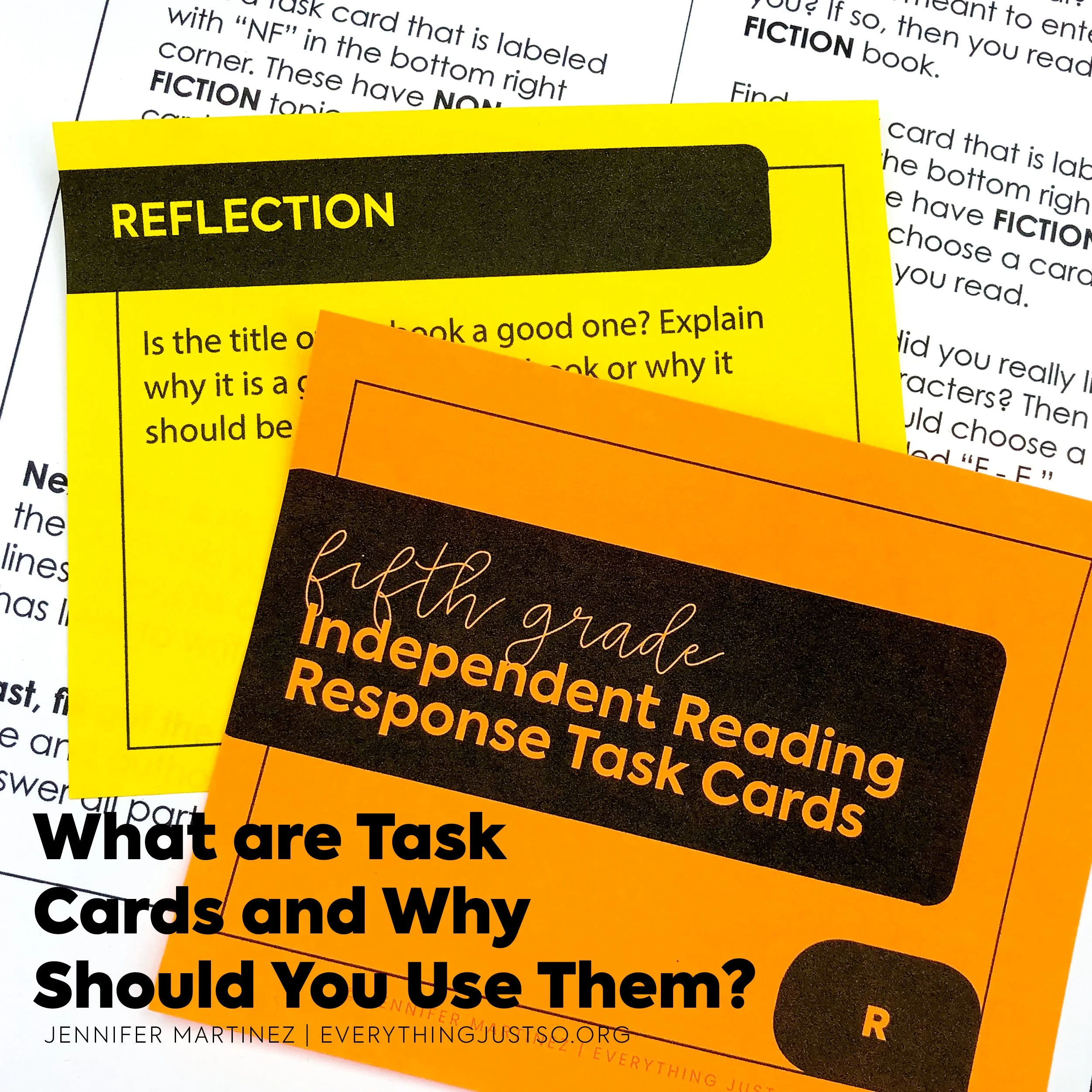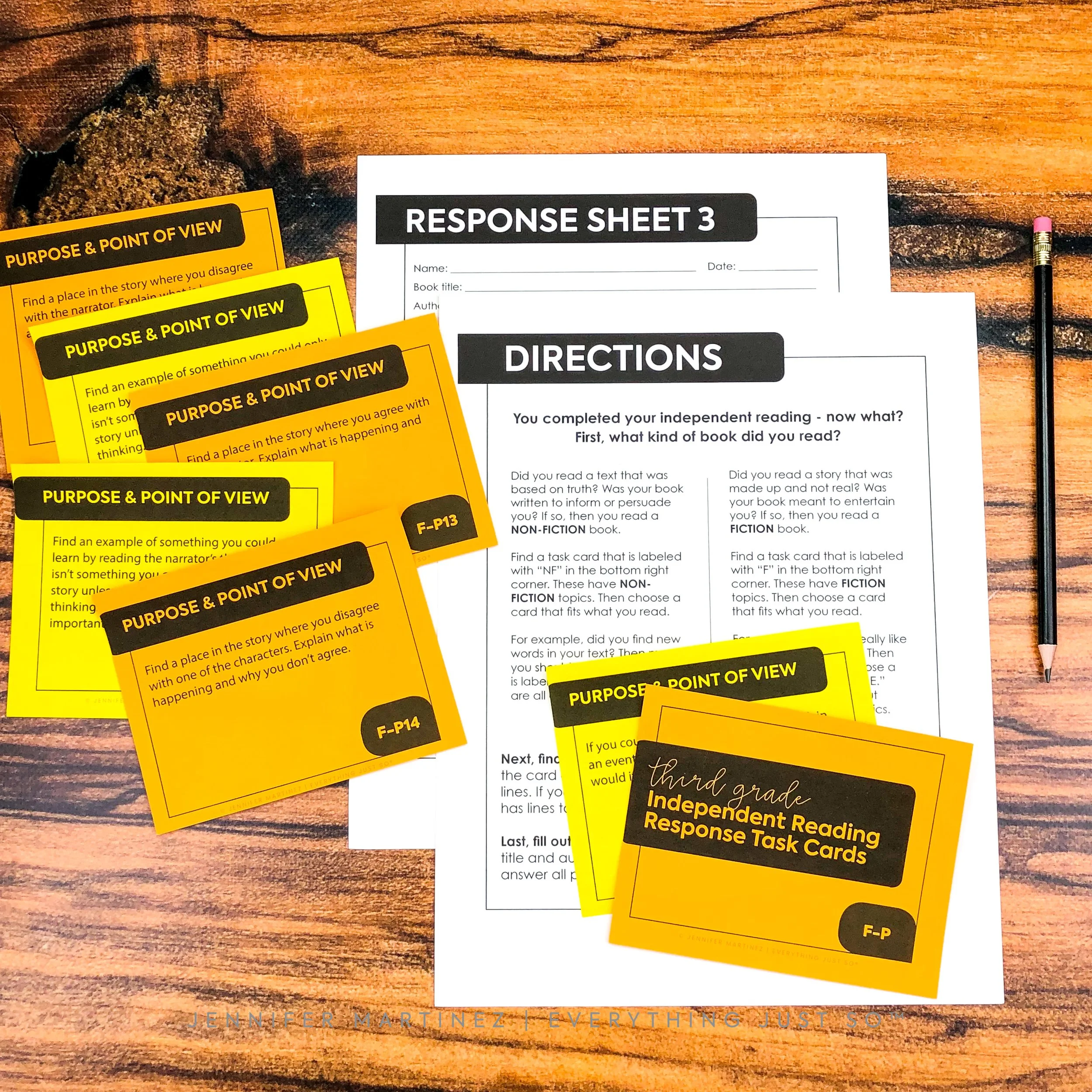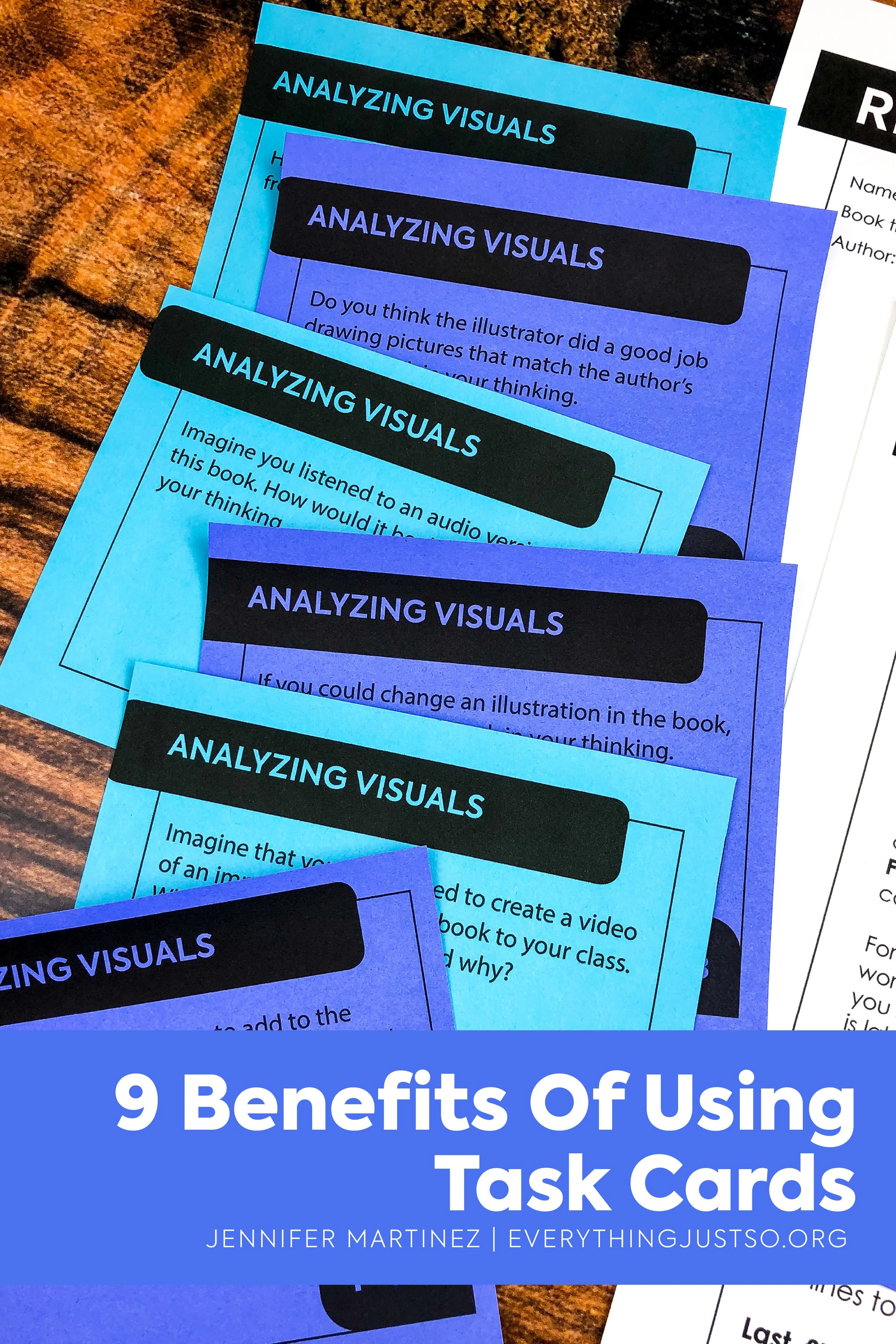What are Task Cards and Why Should You Use Them
Task cards are a go-to resource in classrooms across the country. Teachers love them. Students feel successful completing them. They work for nearly any subject. In short, it’s easy to see why task cards continue to gain popularity.
If you’re not already sold on using task cards in your classroom or if you would like to use them even more effectively, keep reading!
Today I’m going to dive into what task cards are and how they benefit you and your students.
What are task cards?
Task cards are simply that – cards that have a task on them for students to complete. Task cards come in sets to allow you to target a specific skill, standard, or subject. You can use task cards in any subject area, but they are most commonly used in reading, writing, and math. I have reading and writing task cards for 3rd, 4th, and 5th grade in my TPT store.
Think of task cards as an alternative to worksheets. How often do your students get excited about completing a worksheet? If they’re like any students I’ve ever taught, the answer is almost never.
But task cards are a different story.
Students LOVE task cards.
Task cards are perfect for all students, especially those who benefit from chunking. Task cards ask students to focus on one problem, or task, at a time. This one-task-per-card format prevents students from feeling overwhelmed. Task cards also deliver a sense of accomplishment as each card is completed.
Teachers love task cards for many reasons.
One of my favorites is their low-prep factor! Save paper by copying task cards once and laminating them. Have your students write their answers on a sheet of loose leaf paper, in a notebook, or on personal whiteboards.
Digital task cards offer a totally paperless option.
What are the benefits of using task cards?
The popularity and effectiveness of task cards is easily explained by their versatility. They are not traditional worksheets and bear little to no resemblance to typical (boring) reviews.
Each task card features one question, although the question may require a two or three-part answer. This format makes them a great fit for students who may feel overwhelmed by busy worksheets with multiple questions.
Have students who require accommodations or modifications?
Task cards are so helpful. Students need to focus on only one question at a time and each time a question is completed, the student is rewarded with a sense of accomplishment. Task cards feel more like a game than work which motivates all students.
Other benefits of task cards include:
Quick and simple to complete - task cards feature short tasks.
Support differentiation - allow you to have multiple sets of the same type of activity at different levels.
Variety of formats - fill in the blank, short answer, multiple choice, etc.
Build independence - once they learn the process, students can self-start and complete independently.
Quick formative assessments - quickly and easily see if a student understands the concept.
Reusable - students record answers on separate pieces of paper allowing task cards to be used again and again.
Printable and digital options
As you can see, there are so many benefits to using task cards in your classroom. And there are even more ways to use them! In this post, I take you through a number of ways to use task cards to support student learning.
Closing note
Task cards are versatile, easy to differentiate, and encourage student independence. Plus, students enjoy using them to practice and review important skills! They’re an important, engaging tool for any classroom.
I created task cards for 3rd, 4th, and 5th grades. You can see them in my TPT store here. Head there to preview the task cards and hear from teachers like this one who are using them in their classrooms.
“This is a very comprehensive resource that covers all of the fifth grade ELA standards for both fiction and nonfiction. I like to use them in guided reading groups to have students respond to a text using a reading skill we have been focusing on. There are even additional response cards that students can use for any book they are reading independently.”




